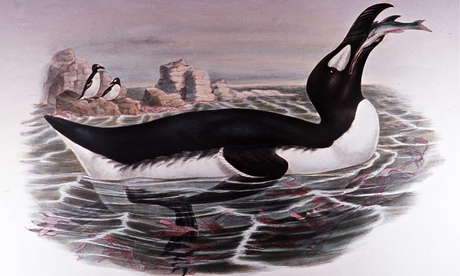
In 2002, the Nobel-winning scientist Paul Crutzen was at a meeting where the chairman kept using the term “Holocene” to describe the present day. This is, technically, correct: the Holocene began at the end of the last ice age. But Crutzen, who had won his Nobel for his work on the effects of ozone-depleting compounds (and so, in being instrumental in shrinking the holes in the ozone layer, could be said to have saved the planet), blurted out that we should actually be calling the present day the Anthropocene: the epoch influenced by humanity. When word of this proposal reached the Geological Society of London, and specifically its stratigraphy committee – the people who decide such matters – they thought about it for a year, and decided: yes, Anthropocene sounds about right.
We really are that influential – and destructively so. And yet if all civilisation were to end now, then 100m years hence, everything we have built would be compressed, in the geological record, to a layer of sediment “not much thicker than a cigarette paper”, as Elizabeth Kolbert puts it.
There is something almost literary about the process of understanding deep history. There is, above all, the business of being able to read correctly what the different layers of rock and sediment tell us about life on Earth. There is the business of being able to read the signs around us of the living record, and to learn to think in the long, rather than short term. It is instructive to discover that we can date the concept of extinction to the year: 1795, when Georges Cuvier examined some recently exhumed mastodon bones and realised that the concept of a divinely ordered animal kingdom was invalid, and that species could be lost for ever. (Kolbert notes that it might not be a coincidence that the notion of extinction arose in revolutionary France.)
And then there is the business of coming up with words to describe these new concepts. Some can be traced to individuals rather than committees. Ninteenth-century English polymath William Whewell, for instance, who has given the language such words as “anode”, “cathode”, “ion”, and, most remarkably, “scientist”, came up with “catastrophist” to describe someone who believes that evolution is punctuated and determined by periodic upheavals in the environment. The term may not be used much any more, but, given that the current view of evolutionary pressure is “long periods of boredom punctuated by panic”, the idea behind it is not obsolete.
It would seem now, though, that the panic is entirely down to us. There are grounds to believe that the first mass extinction of life on Earth (the end-Ordovician, to be precise) was caused by newly emergent plant life; and the end-Cretaceous, as I’m sure you all know, was caused by a meteor slamming into what is now the Yucatán peninsula. Kolbert describes this very well and vividly, and also reminds us that every animal larger than a cat was wiped out.
Now, though, we are at the point where we are the meteor. Our impact on life on Earth is not as spectacular, nor as instantaneous; but in geological terms it might as well be. As the planet warms up, and carbon dioxide acidifies the oceans, all bets are off – except the ones hinging on mass extinctions. As one scientist quoted here puts it: “Look around you. Kill half of what you see. Or if you’re feeling generous, just kill about a quarter of what you see.”
Kolbert’s book is not, thankfully, as depressing as you might think. She has a good grip on her subject and uses a light touch when it is most needed. The main thing is that what she says is necessary to know. I wonder how a climate change denier would take this book; the science of climate change is, here, entirely pervasive, entirely beyond doubt, as just about everyone who has properly studied the subject would be able to tell you. Meanwhile, mourn the great auk, the moa, the broad-faced potoroo ... and an uncountable number of other species.
• To order The Sixth Extinction for £7.19 go to bookshop.theguardian.com or call 0330 333 6846.

